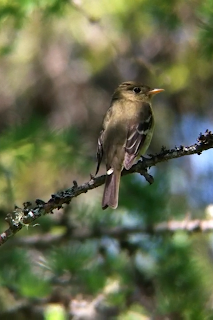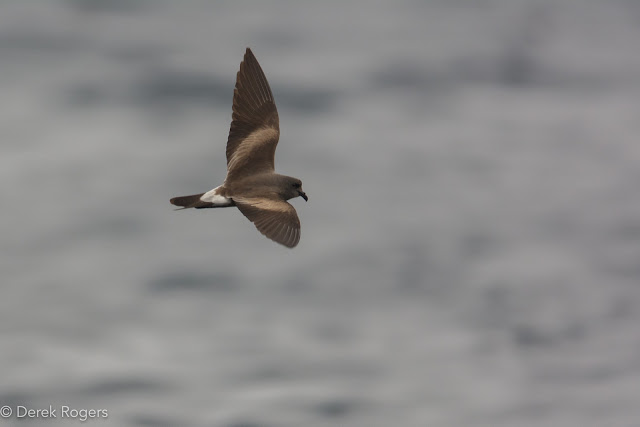 |
| Yellow-bellied Flycatcher |
A Weekend Excursion to the North Country
I always enjoy spending time in boreal forests. The powerful aroma of black spruce and tamarack can barely be recreated. Lichens dangle from old snags, sphagnum moss carpets the forest floor and the cool, moist woodland sets the stage for an unforgettable experience in nature. This has always been the case since I've visited the many boreal forest areas in New York's Adirondack Park. Even when the black and deer flies are in heavy pursuit, I arrive prepared and accept their place in the forest. It's no wonder that Yellow-bellied Flycatchers thrive in this habitat. You can hear their bills "snapping" as they hawk aerial prey. One last deer fly to breach my defense.
The photo on the right was a digiscope shot taken at Bloomingdale Bog, south end near the first powerline cut. I'd encounter several more Yellow-bellied, just not as photogenic, in the general vicinity. My Flicker link contains a video clip of this individual. Listen for it's hoarse, buzzy "chebunk" song. It should sing twice in the clip. Also seen, but not recorded, were Alder Flycatchers. Alders are found within the Empidonax genus just like the Yellow-bellied. The "Empids" must not be hastily identified solely by their physical characteristics. It is best to hear their song as a way to differentiate species. While Yellow-bellied typically appear "yellow," variable lighting conditions, and "worn" feather stages, can trick even the keenest of eyes.
 |
| Adult Male Black-backed Woodpecker |
One of my better experiences in birding took place this weekend while observing a Black-backed Woodpecker pair tend to their nestlings. The nest cavity was built in a spruce snag within dense spruce and tamarack forest. Black-backeds, like many other woodpecker species, will annually excavate a new cavity, rather than return to the same one. I observed the pair for nearly 2 hours. Black-backeds are seekers of insect larvae. They are robust, powerful looking woodpeckers that flake bark off of trees in search for larval pray. The male's most striking physical difference from the female is his golden crown. Both the male and female were working diligently to feed their young providing a food delivery about every 10-15 minutes. Black-backed woodpeckers show a strong relationship with burned over areas. They are known to follow outbreaks of bark and/or wood-boring beetles in areas that have been exposed to forest fires. While this is not a necessity for their survival, it seems to play a large role in yielding abundant reproductive success for the species. The relationship between fire and beetle outbreaks has been studied throughout much of the NW tier of the United States where fire and logging take place on a regular basis.
I'm glad that I get to see this magnificent bird in my home state of New York. The Adirondack Park supports some great boreal forest that pulls in some unique birds. I'm still waiting for the day when I get to observe an American three-toed Woodpecker. The Black-backed Woodpecker and American three-toed Woodpecker are the only two perching birds in North America that have three toes. Hopefully next year I'll be sharing information on the scarce, American three-toed Woodpecker! It's nice to dream!
 |
| Female Black-backed Woodpecker |






Next time you chase that three-toe I'd like to join ya. I'm pretty good luck on those excursions. Exceptional photography again, geez! Your working for those photos. I will talk with Jeff Bolsinger for some hints. Those boreal forests are a plant samplers dream. Did some 200 plots within the ADK line way back and there was about 5 plant species. Low diversity. No challenge.
ReplyDelete